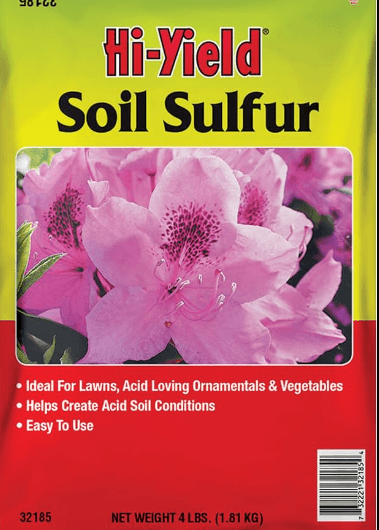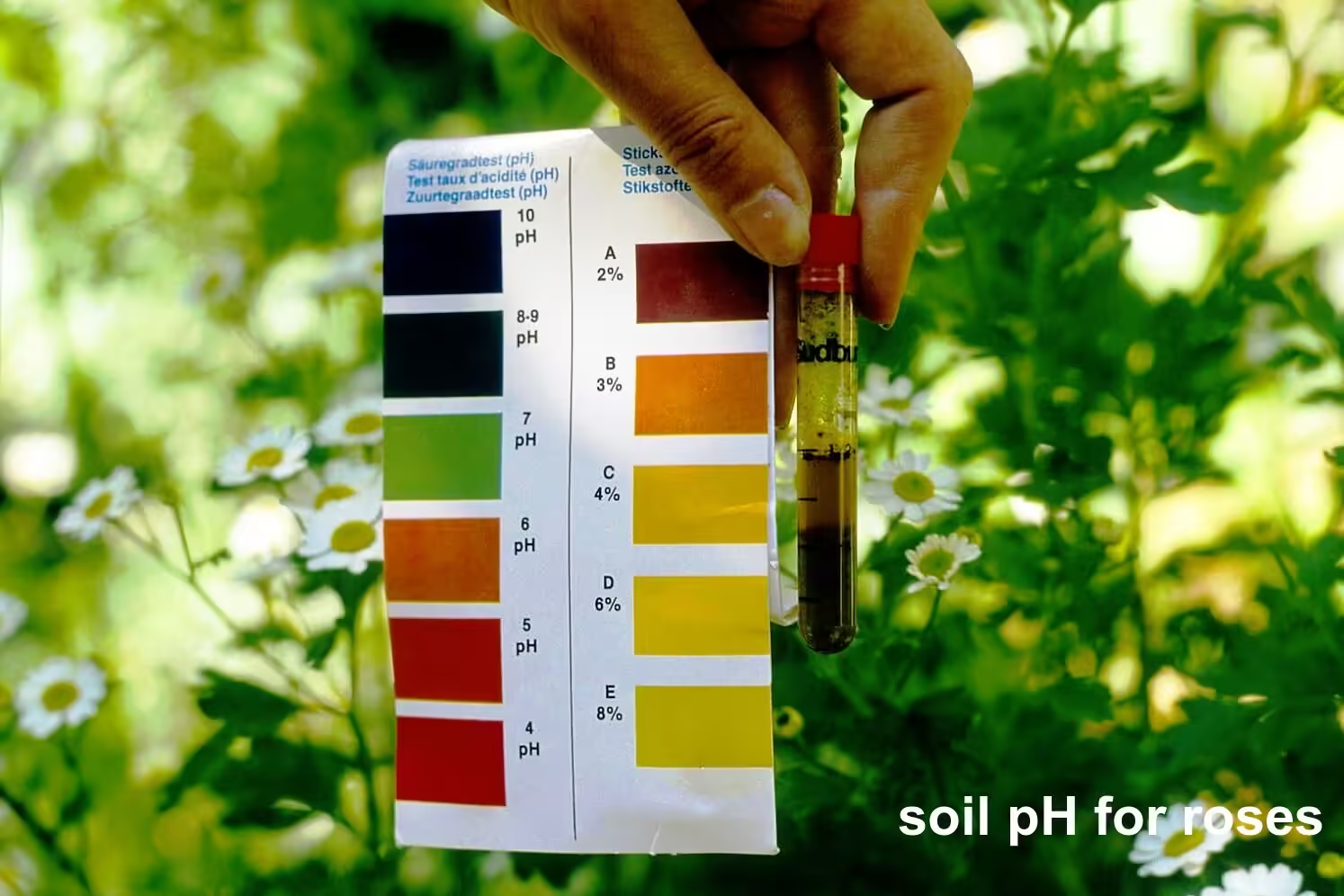Best Soil pH For Roses | Soil Requirements For Roses
What is the ideal soil ph for roses?
Soil pH measures the acidity or alkalinity of the soil and is expressed on a scale from 1 to 14. A pH of 7 is considered neutral, while values below 7 are acidic, and those above 7 are alkaline. For most plants, including roses, the ideal soil pH range is slightly acidic, between 5.5 and 6.5. But some roses will grow at pH below and above this range. Based on Soil Preparation for roses pdf
Why Soil pH Matters for roses
Soil pH plays a big role in how well nutrients are available to your plants. If the pH drops below 6.0, the key nutrients like nitrogen, phosphorus, and potassium become less accessible. It also affects secondary nutrients like sulfur, calcium, and magnesium. Plus, if the pH goes below 5.5, it can cut down on soil microbial activity, which isn’t great for your plants’ health.
On the other hand, a pH higher than 7.5, which is considered alkaline, can hinder the plant’s ability to absorb micronutrients such as magnesium, iron, boron, copper, and zinc. This means that even if the soil is rich in nutrients, they may not be available to the plants if the pH is not within the ideal range.
So while roses enjoy slightly acidic conditions, extreme acidity should be avoided to keep them healthy and blooming well.
- Soil pH affects beneficial microbial activity, which is important for decomposing organic matter and releasing nutrients for roses. In acidic soils, microbial activity decreases, slowing down nutrient cycling.
- Maintaining the correct pH prevents stress on roses, reducing their vulnerability to diseases, pests, and poor environmental conditions. Healthy roses produce more flowers and have better resistance to common issues.
- A balanced pH ensures that roots can effectively absorb water and nutrients. If the soil is too acidic or alkaline, root function is impaired, limiting the rose’s access to essential elements.
- Soil pH influences soil structure and its ability to retain water and nutrients. A balanced pH helps maintain good soil texture, which provides adequate drainage while holding enough moisture for roses to thrive.
Correcting Soil pH for roses
To correct high soil pH, gardeners can add substances such as aluminum sulfate or plain sulfur. These materials help lower the soil’s pH, making it more acidic and conducive to nutrient absorption by the plants. For instance, adding aluminum sulfate in measured amounts around the base of plants, combined with proper watering, can effectively reduce pH levels. Gardeners should monitor the pH every two weeks and adjust their treatment accordingly.

Testing Your Soil pH for roses
For a more comprehensive analysis, soil samples can be sent to local agricultural extensions, such as Penn State’s soil testing service, which provides detailed reports on soil pH and nutrient content.
- Digital Testers: These devices are inserted into the soil and provide a digital reading of the pH. They are convenient but must be cleaned after each use.
- Chemical Test Kits: These involve mixing soil with water and a testing tablet, which causes the mixture to change color, indicating the soil’s pH level.
how to increase ph for roses (Natural way)
- Sprinkle the lime evenly over the soil, then work it into the top few inches. Water thoroughly to help the lime dissolve and adjust the pH over time.
- The amount needed depends on the soil’s current pH and type (clay, sandy, loam), so it’s best to follow instructions based on a soil test.
- Sprinkle wood ash lightly over the soil and water it in. Avoid over-application, as too much ash can raise pH too quickly.
- Baking Soda (for small-scale adjustments): You can dissolve a small amount of baking soda in water and apply it to the soil. However, this method is usually reserved for very minor pH adjustments.
- Garden Lime Pellets: These are easier to apply than powdered lime and can slowly raise the pH over time. They break down gradually, providing a steady pH increase.
Before adjusting the soil pH, it’s essential to conduct a soil test to know the current pH level and avoid overcorrection.
Soil pH Requirements for Specific Rose Types
So, if you’re looking after different types of roses.
Soil pH needs to keep them looking their best:
Knockout Roses: These beauties are super hardy and love a pH that’s a bit on the acidic side, around 6.0 to 6.8. This helps them get all the nutrients they need for those amazing blooms. If your soil’s too acidic or too alkaline, you might need to tweak it a bit—add some lime to raise the pH or sulfur to lower it. Regular soil checks are a good idea to keep everything in balance.
Desert Roses: Also known as Adenium, these guys are all about that dry, desert vibe. They prefer their soil pH to be between 6.0 and 7.0—so a little on the acidic to neutral side. Good drainage is key here because they don’t like their roots sitting in soggy soil. Keep an eye on the pH and adjust as needed to keep them happy and blooming.
Rose of Sharon: These roses, or Hibiscus syriacus, are pretty flexible but do best with a soil pH between 6.0 and 7.0. This range helps them grow strong and flower beautifully. Even though they can handle a bit of pH variation, sticking to this range will give you the best results. Regularly checking and adjusting the soil pH will help keep them looking fantastic.
how to lower ph for roses
If the soil pH is higher than 6.5, meaning it becomes too alkaline, roses may have difficulty absorbing essential nutrients like iron, manganese, and phosphorus. This can lead to issues like chlorosis (yellowing of leaves), poor growth, and reduced blooms.
To lower the pH and make it more acidic, you can amend the soil with sulfur, organic matter like compost, or acidic fertilizers. It’s best to regularly test the soil pH to ensure it stays within the optimal range of 6.0 to 6.5 for healthy rose growth.
Given the importance of soil pH, regular testing is essential. While many gardeners test for macronutrients, it is equally important to test for pH. There are various methods to test soil pH:
azalea soil ph
Azaleas prefer acidic soil with a pH range of 4.5 to 6.0. This lower pH level helps them absorb essential nutrients like iron and magnesium. If the soil is too alkaline (above pH 6.0), azaleas may suffer from nutrient deficiencies, leading to yellowing leaves (chlorosis), poor growth, and fewer blooms.
To maintain the ideal pH for azaleas, you can add organic matter such as peat moss, pine needles, or sulfur to lower the soil pH if necessary. Regular soil testing can help ensure the pH remains within the optimal range for healthy azalea growth.
Do roses prefer acidic soil?
Yes, roses prefer slightly acidic soil with a pH between 6.0 and 6.5. This slightly acidic environment helps roses absorb essential nutrients like nitrogen, phosphorus, potassium, and micronutrients such as iron, which are crucial for their growth and flowering.
Do roses prefer alkaline soil?
No, roses generally do not thrive in alkaline soil. They prefer slightly acidic soil with a pH between 6.0 and 6.5. If the soil is too alkaline (above pH 7.0), roses may struggle to absorb essential nutrients like iron, manganese, and phosphorus.
In alkaline soils, these nutrient deficiencies can hinder the health and appearance of the roses. If your soil is alkaline, you can lower the pH by adding organic matter (like compost), sulfur, or acidic fertilizers to create a more favorable environment for roses.
